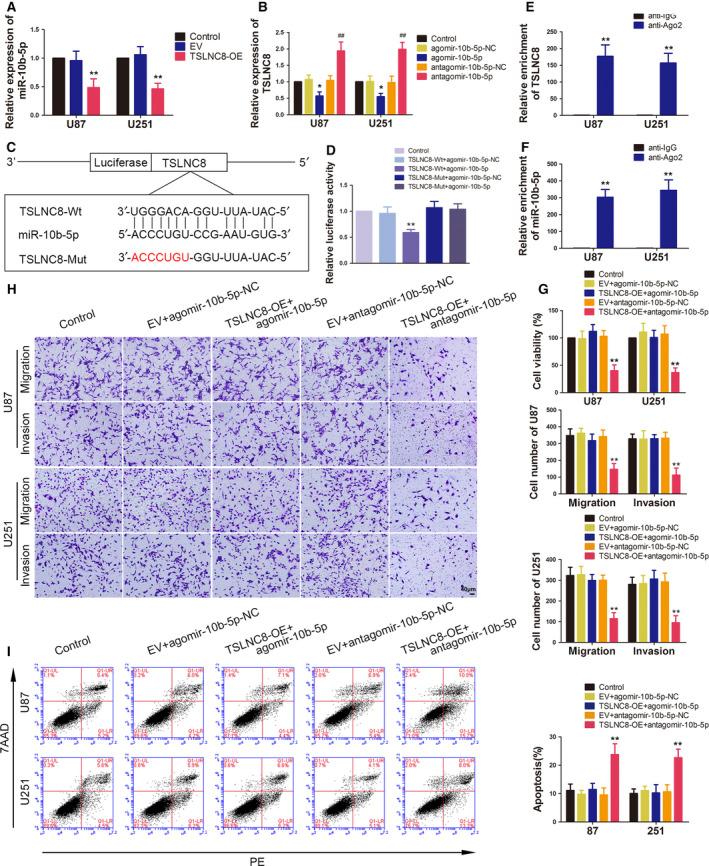Fig. 4.

Overexpression of TSLNC8 impaired malignant biological behaviours of glioma cells by reducing miR‐10b‐5p expression. (A) qRT–PCR analysis of miR‐10b‐5p expression, which is regulated by TSLNC8 in U87 and U251 cells. Data are presented as mean ± SD (n = 3 for each group) and analysed by using one‐way ANOVA. **P < 0.01 vs. EV group. (B) qRT–PCR analysis of TSLNC8 expression regulated by overexpression or knockdown of miR‐10b‐5p in U87 and U251 cells. Data are presented as mean ± SD (n = 3 for each group) and analysed by using one‐way ANOVA. *P < 0.05 vs. agomir‐10b‐5p‐NC group; ## P < 0.01 vs. antagomir‐10b‐5p‐NC group. (C) The predicted binding sites of miR‐10b‐5p in TSLNC8‐Wt and the designed mutant sequence of TSLNC8‐Mut are indicated. (D) Relative luciferase activity of TSLNC8‐Wt or TSLNC8‐Mut and agomir‐10b‐5p‐NC or agomir‐10b‐5p cotransfected HEK293 cells. Data are presented as mean ± SD (n = 3 for each group) and analysed by using one‐way ANOVA. **P < 0.01 vs. TSLNC8‐Wt+agomir‐10b‐5p‐NC group. (E, F) RIP confirmed that TSLNC8 and miR‐10b‐5p were in the RISC complex. Data are presented as mean ± SD (n = 3 for each group) and analysed by using Student's t‐test. **P < 0.01 vs. anti‐IgG group. (G) CCK‐8 assay was used to measure the effect of TSLNC8 and miR‐10b‐5p on the viability of U87 and U251 cells. (H) Transwell assays were used to measure the effect of TSLNC8 and miR‐10b‐5p on the migration and invasion of U87 and U251 cells. (I) Flow cytometry analysis of U87 and U251 cells treated with altered expression of TSLNC8 and miR‐10b‐5p. (G–I) Data are presented as mean ± SD (n = 3 for each group) and analysed by using one‐way ANOVA. **P < 0.01 vs. EV+antagomir‐10b‐5p ‐NC group. Scale bar represents 40 μm.
